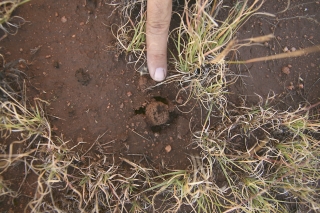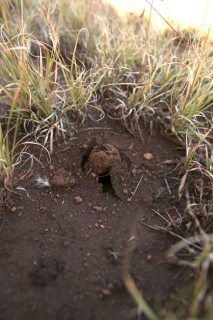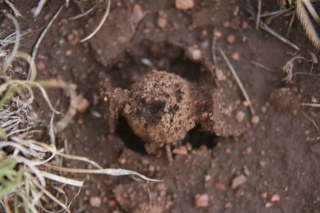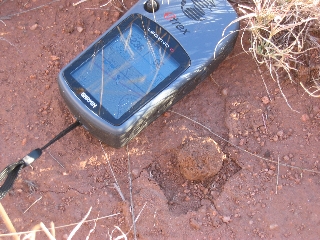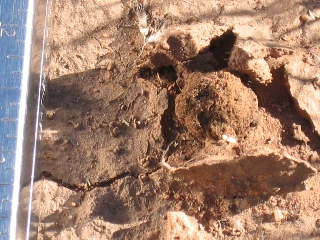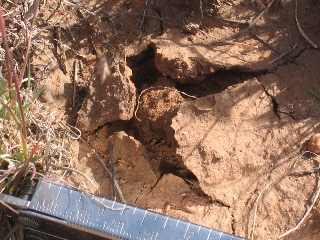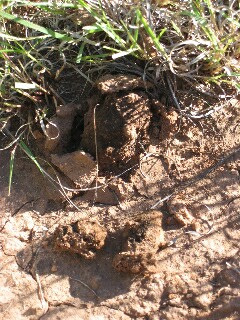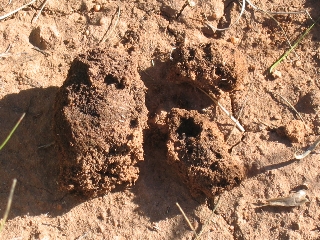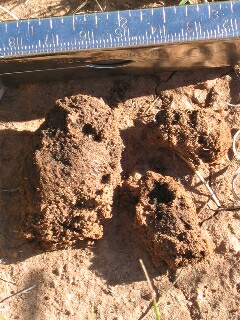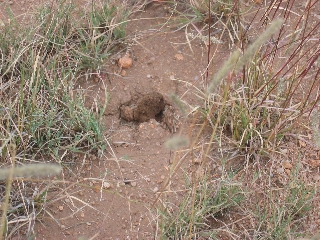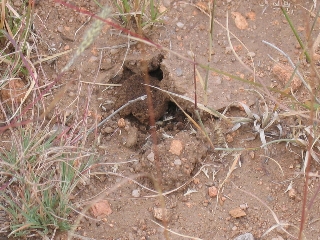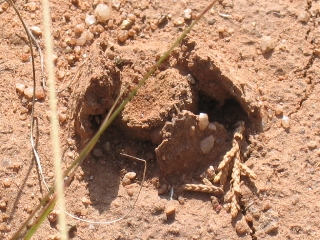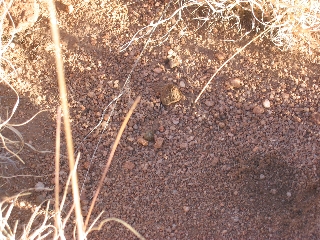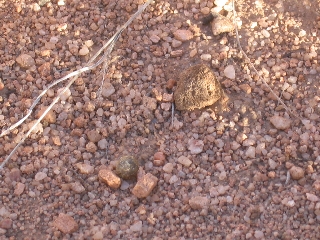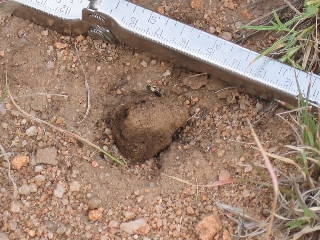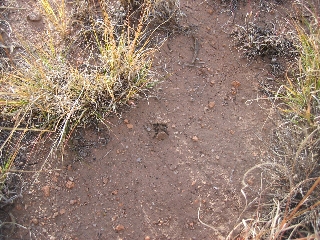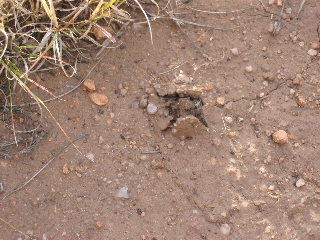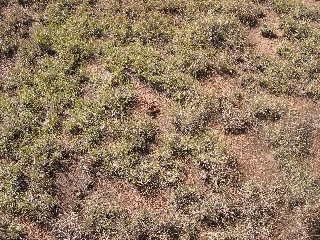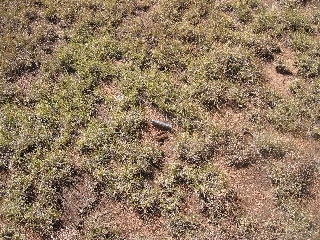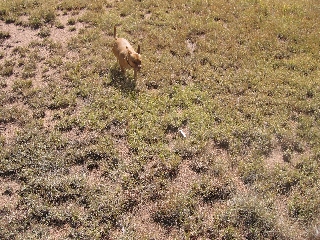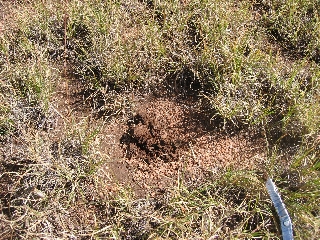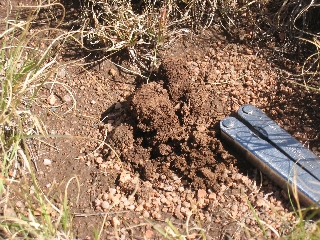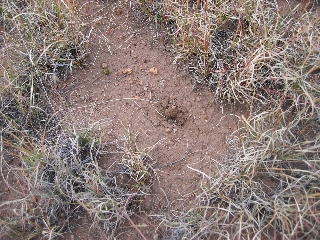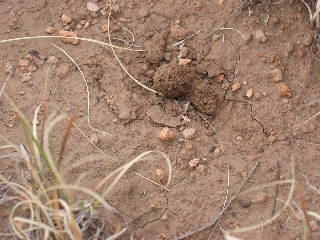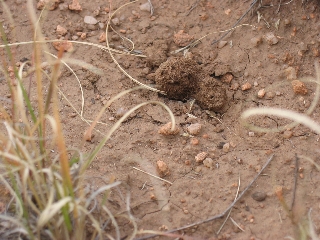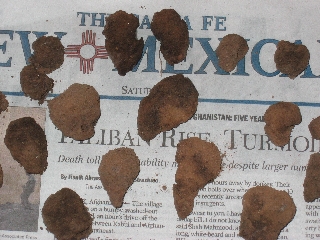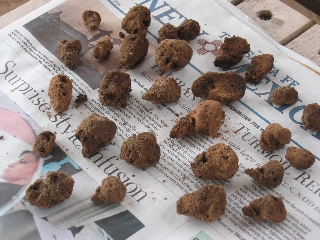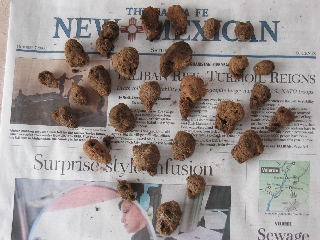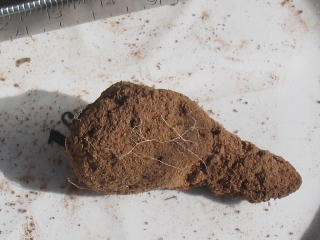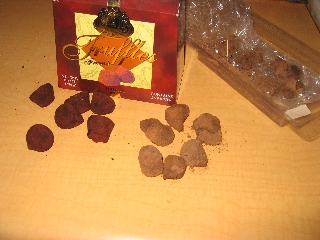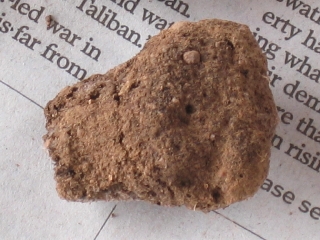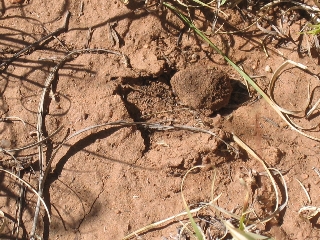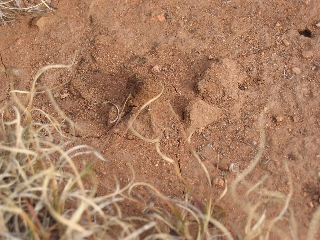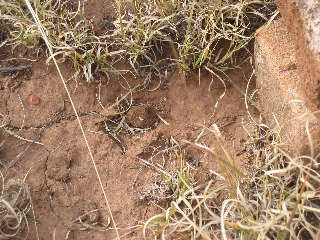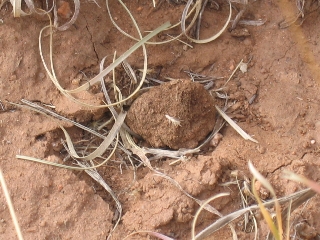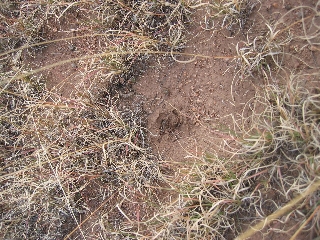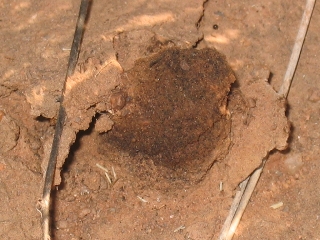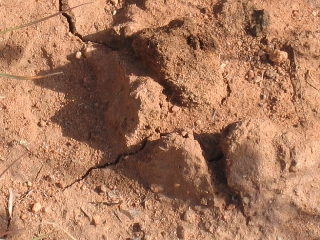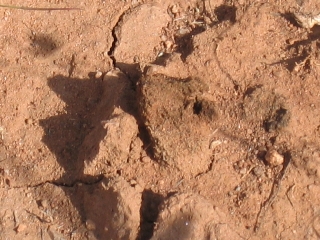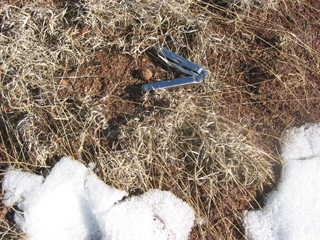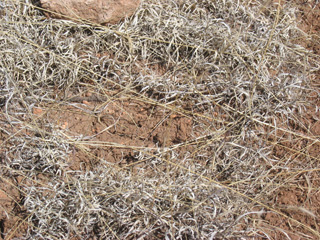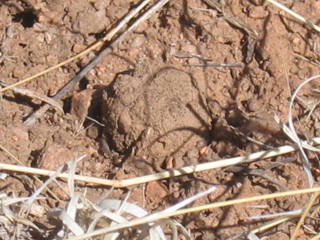This picture shows my GPS next to a sporocarp in situ. You can read the coordinates if you zoom in.
The field notes accompanying D.J. Stouffer's 1955 holotype collection of this species are minimal. The location is described as "approx. 70 km SW of Winslow (AZ), Barrowed Tank, in soil." That's pretty vague, and there's a whole lot of territory out there. Good luck finding that particular site; a pit, possibly a catchment pond for watering livestock, dug more than 50 years ago, out on the edge of the desert... somewhere...
In all the years before Stouffer's collection was made, in the 51 years between his and mine, or in the 5 years after as I update this, apparently nobody else has ever encountered this species, in Arizona, or anywhere (think about those words for a minute... nobody, ever, anywhere).
As near as I can tell, what that all means is that if one wanted to research this species, especially considering its resistance to pot-culturing thus far, this location, totaling only about ten acres in size, is the only verifiable spot on the entire planet where living specimens of this fungus, with mycorrhizal associations in place, can positively be said to be found. I must conclude that this bizarre little critter REALLY belongs on the Endangered Species List, and this location should be a protected habitat. Wouldn't you agree? If so, please call, write, or email Rob Larraņaga, with the U.S. Fish & Wildlife Service at the Las Vegas National Wildlife Refuge, and tell him you learned about this here and you think it needs protection. Thank you.
